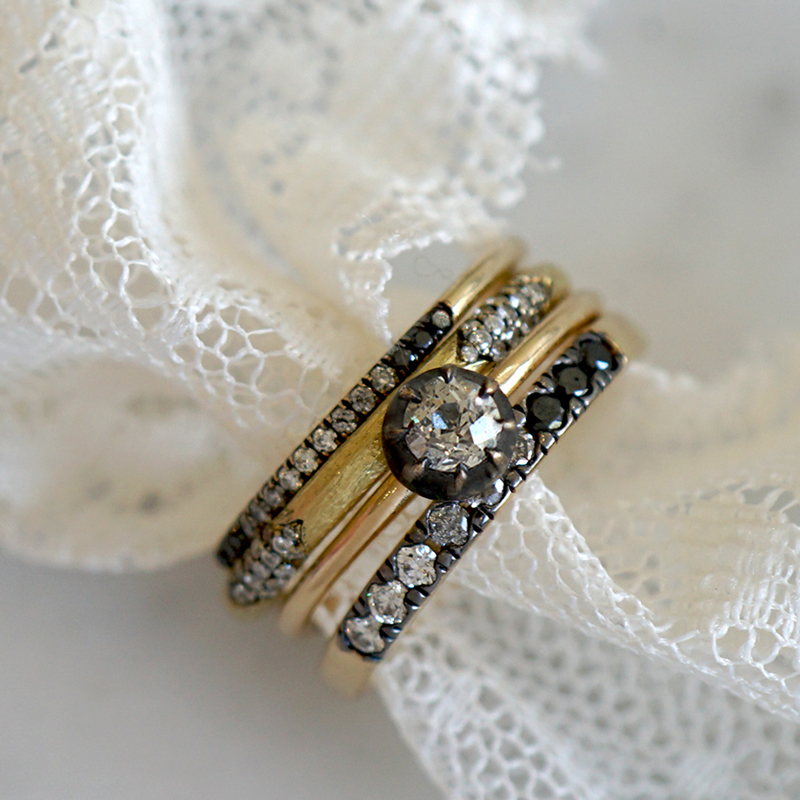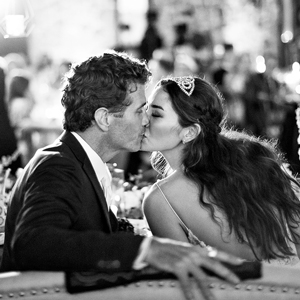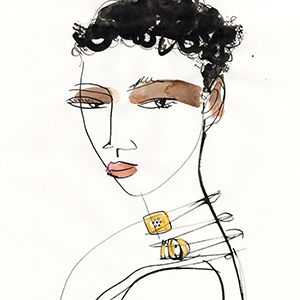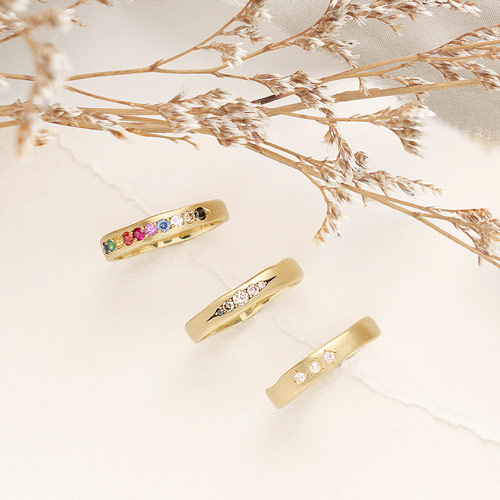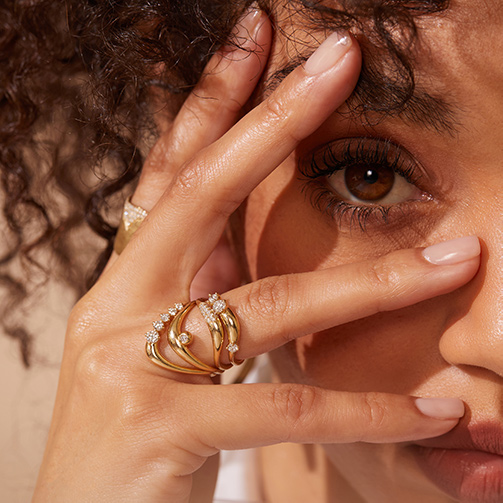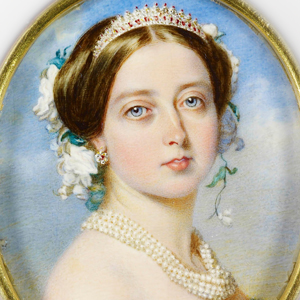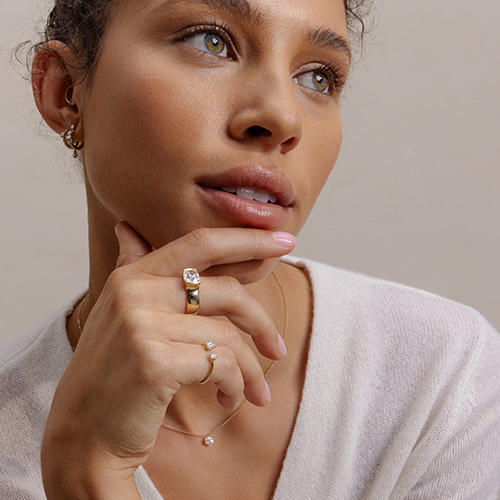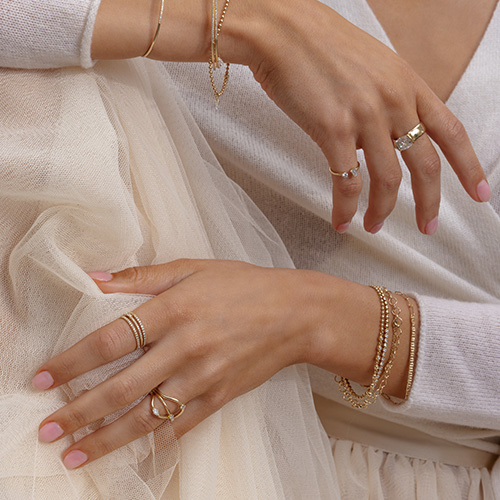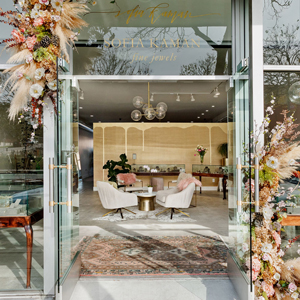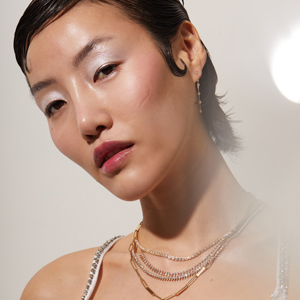Nothing, we repeat, nothing is more frustrating than having a favorite piece of your daily gold jewelry turn rusty or even worse: turn you green. While green may be this season’s “it” color, we certainly don’t love it when it comes to our skin color (sorry, Hulk). Sadly, fast fashion has severely impacted the jewelry industry, and knowledge regarding the various nuances of gold is not widely distributed. The learning curve can seem daunting, but if you know what to look for you will never find yourself with dull, tarnished jewels again. Not to worry if you’re feeling alone! We golden gals are here to help and aim to make the whole process feel as approachable as possible. It’s time to ditch the green skin and wave hello to a new era where you can finally douse yourself in the fine golden jewels that you deserve.
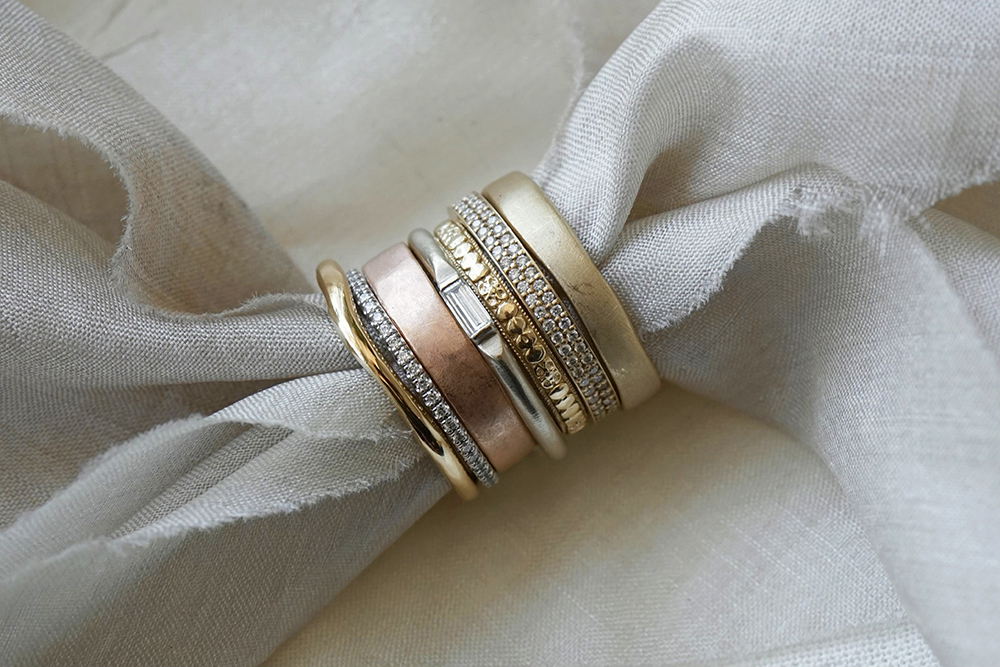
TIP #1: KNOW YOUR METALS
We’ll be honest: when it comes to the first time learning about gold variances, it’s not uncommon to feel overloaded. There is a lot to absorb and to make matters worse, the internet is filled with a large sum of misleading information. Unfortunately, it can be all too easy to fall into the trap of overpaying for poorly manufactured gold pieces, as it’s common to hear brands state that gold plated, filled and vermeil jewels only differ slightly in comparison to those made of solid gold when the truth is that the disparity is striking. Knowing how to distinguish these key differences is the first and most important step toward beginning to curate your fine jewelry collection.
When talking about gold jewelry, it is best to divvy the information into two categories based on longevity. We like to refer to these categories as fashion and fine. Fashion jewelry consists of plated, filled, and vermeil pieces whereas fine jewelry is any jewelry that is made from precious metals such as gold, silver, or platinum.
Let’s break it down even further. In the fashion realm, gold-plated pieces are the lowest on the scale in terms of cost and longevity. Gold plated means that an ultrathin layer of gold, usually less than .05%, has been electroplated onto a non-precious base metal “core” such as brass, copper, or nickel. Often, this results in tarnishing, which is that dreaded red rusty color as that golden layer rapidly wears down. Tarnishing is a chemical reaction that occurs when the other metals that are mixed with the gold and silver in fine jewelry come into contact with air and other various substances such as lotions, perfumes, and oils on the skin and cause it to darken.
A close second place to gold plated is gold filled, which offers a thicker layer of gold (about 5%) pressure bonded to a base metal that is usually brass. While this thicker layer may seem promising in the realm of longevity, although delayed, the tarnishing process will still take place as the piece is exposed to daily habits such as sweating, applying products, or showering. Given the higher price tag that gold-filled pieces typically come with, it’s more economical in the end to simply save and invest in fine jewelry.
Last, there’s gold vermeil which is similarly electroplated with an even thicker layer of gold. The primary difference is the base metal, which is always sterling silver. Although much more delayed (gold vermeil can offer the gold shine for years), tarnishing can still happen.
So, now you’ve found yourself in fine jewelry land, where you are presented with a new set of options: 10k, 14k, 18k, 24k, and everything in between… So what is the difference? Gold’s purity is measured in Karats or parts, out of 24. Therefore 24k gold would be pure, 18K would be less pure and 14K even less so. Although the thought of pure 24k gold may sound enticing, gold at that purity level is far too malleable for everyday wear, and not to mention, the higher the karat = the higher the cost. Moving down the line, 18k is 18/24 parts solid gold with the remaining parts consisting of various alloys to make the metal stronger. 14k is 14/24 parts and 10k… Well, you get the idea.
Another factor to consider is the color, as the more gold content present, the more yellow the metal will appear. 18k is going to present itself as a rich and buttery yellow, whereas on the opposite end of the spectrum, 10k will appear as a much softer hue.
So, what is the best option? These days you will find 10k, 14k, and 18k to be the predominant choices. What is best will greatly depend on your preference, lifestyle, and budget. 10k will surely be more budget-friendly than its 14k or 18k counterparts, although the purity level falls at the less than half mark in comparison. We typically recommend 14k for fine jewels as it is ultimately the perfect happy medium in terms of color, purity, and hardness for daily wear. When shopping for fine jewels, you should always be able to find a small stamp placed somewhere on the piece indicating its karat. This is always smart to check for, although be warned: this stamp can be fraudulently placed – thus leading us into tip #2.
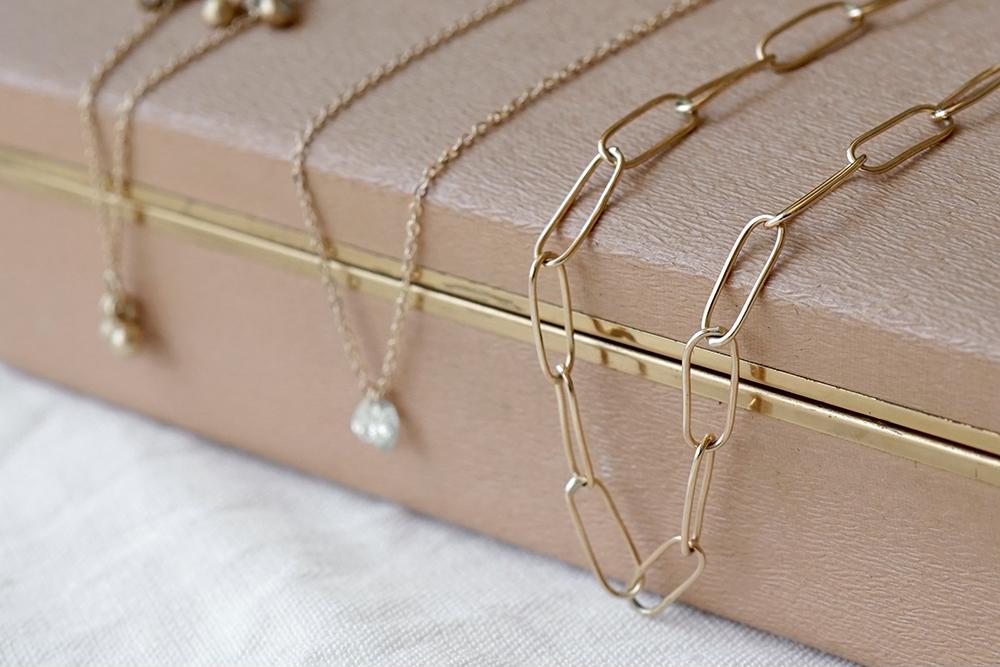
TIP #2: DO YOUR RESEARCH
Time to channel your inner Sherlock Holmes! You’ve learned all about metals and are now feeling ready to invest your hard-earned money into a few key fine jewelry pieces. It’s imperative to research who you are buying from to ensure that they are a trusted and reputable brand. Read reviews, look the brand up on social media, and most importantly, read the description for every product that you are interested in.
Some brands will advertise that they carry 14k gold jewelry, but upon reading the fine print under the item, you will sometimes find that it is actually 14k gold plated or filled, which is not the same thing. This is a common marketing technique, especially when it comes to online retailers, so it is imperative to check and double-check the items that you are planning on purchasing. Additionally, beware of scammers. If the prices look too good to be true, they probably are. Always trust your instincts and be sure to research to the best of your ability before hitting that Add To Cart button.
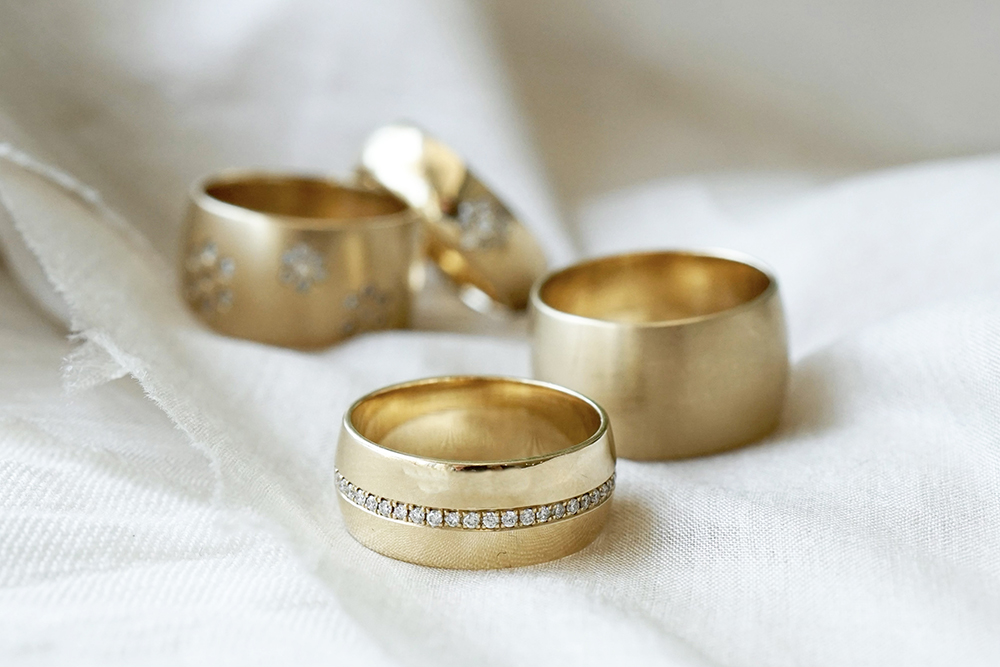
TIP #3: START WITH THE BASICS
We get it: fine jewelry can be pricey and it can be hard to muster up the pretty penny it takes to build a solid collection. While it can be tempting to purchase everything at once, we recommend starting slow. Perhaps this means only purchasing a few pieces per year, in which case, examine your current fashion jewelry collection and determine what your most worn pieces are. Are you primarily a bracelet, necklace, or ring gal? Do you have a certain style of chain that you find pairs well with a majority of your wardrobe? These are the kinds of questions to take into account when commencing the process. We highly recommend starting with timeless styles in each category to ensure that your investment will live up to its maximum potential.
If you are a fashionista who strives to be a golden goddess dripping in jewels ‘round the clock, it may be time to take the leap and invest! With Summer in full swing, we want to ensure that your jewels are going to withstand your sun-soaked adventures and allow you to feel your best at all times. Remember: educate yourself, research where you are buying, and start with the basics! And then you too can finally wave ta ta to tarnish and hello to a stunning collection of golden heirlooms!
